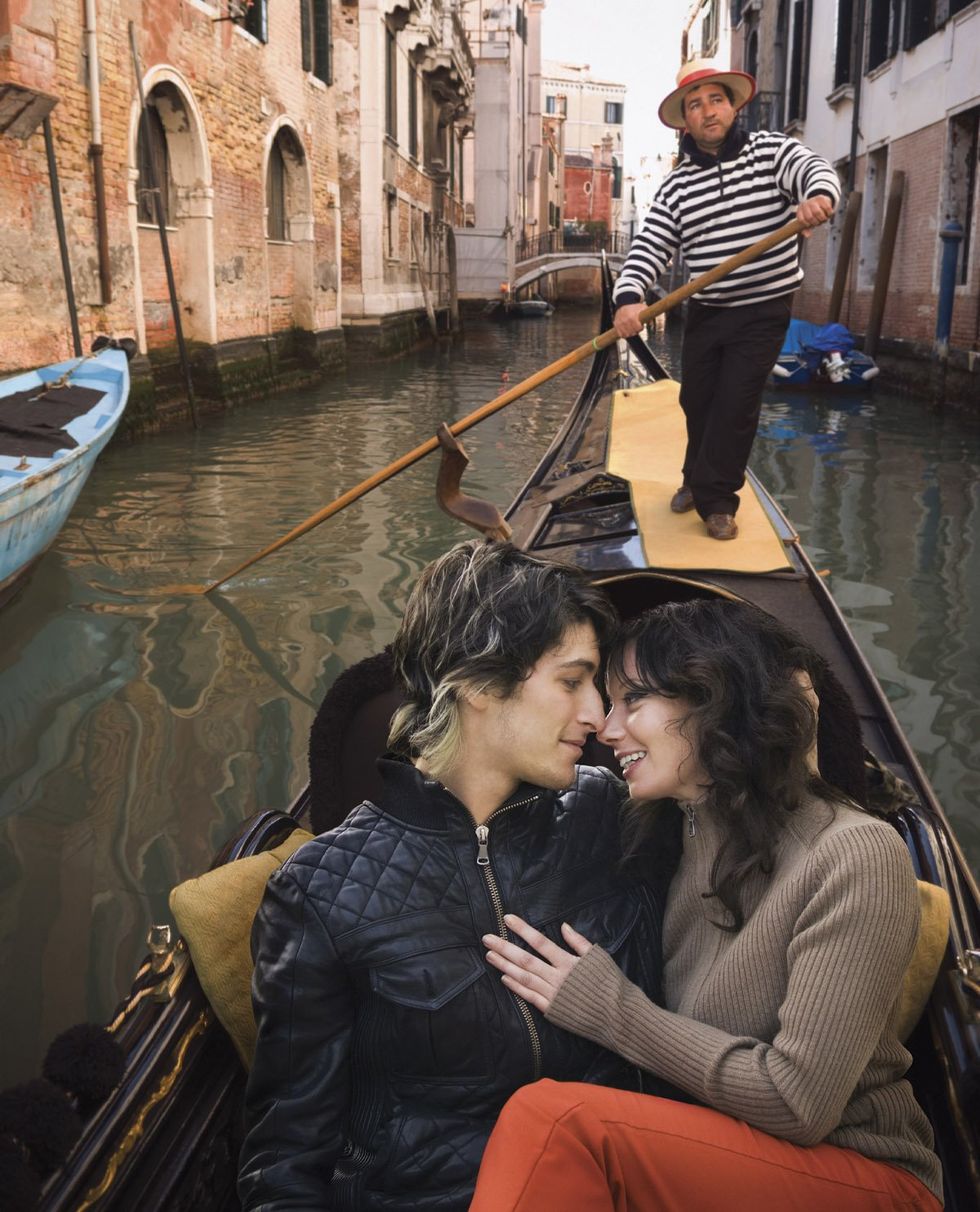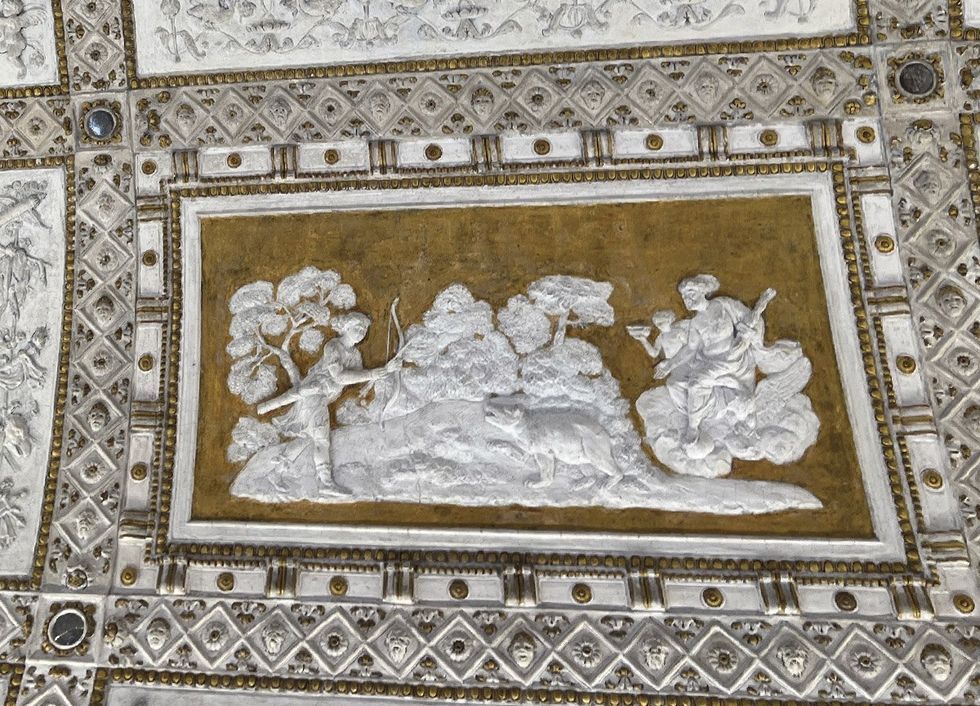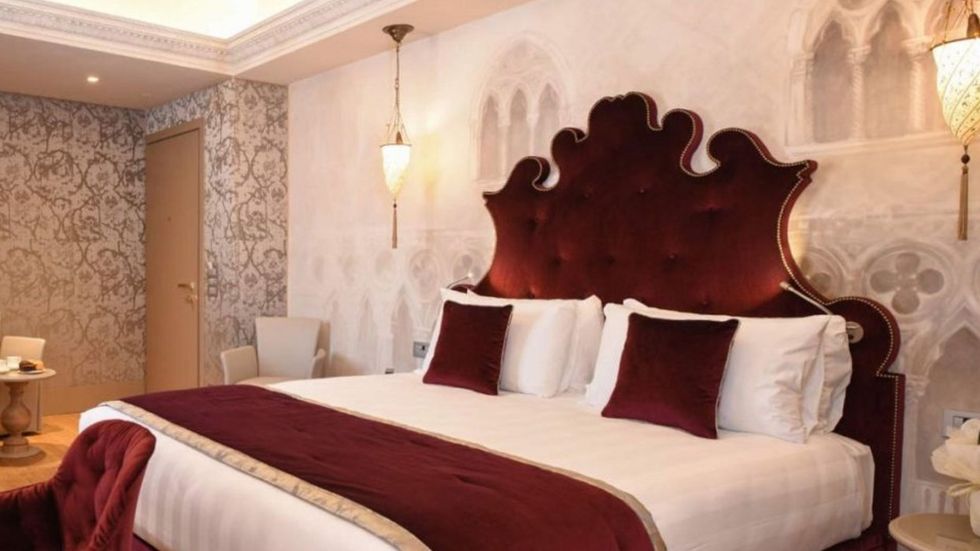An LGBTQ+ Tour of Venice, Italy
Venice is sinking. The iconic Piazza San Marco, home to a palace and the attached St Mark’s Basilica (built in 1063) now floods several times a year, despite the city’s investment of $6 billion into a flood barrier system that took 20 years to build. The problems started back in the 1950s when companies were allowed to pump water out of underground aquifers for industrial purposes — causing the city to drop roughly 5 inches. Now it’s facing rising seas (the water in the lagoon is already 12.6 inches higher compared with 150 years ago) due to the ongoing climate catastrophe. And yet, visiting Venice can be surprisingly hopeful. People have been living here for more than a millennium and the houses and shops that crowd the city’s canals and narrow cobblestone streets are tangible evidence of humanity’s resilience. You can see the layers of different kinds of bricks and changing construction styles, obvious signs of building on top of an older structure. The city has been rising for centuries, ever since the first settlers constructed buildings on foundations of wood posts sunk into mud flats in the 5th century.Queers have probably been here that long too, especially given what we know about sexual relations in single-sex populations, and knowing that Venice’s merchant mariners were away from their wives for months and years at a time. But evidence of LGBTQ+ existence isn’t well documented until gay sex became a crime. Then arrest and trial documents show the punishment of those convicted: in the 15th century, they were burned to death. Those guilty of sodomy were imprisoned into the 17th. PBNJ Productions Getty ImagesBut according to Manuel Meneghel, a gay architect and history buff who leads LGBTQ+ tours of Venice, one can also find traces of queer history in ancient saunas and in the redlight districts, where some courtesans were lesbians. The world’s oldest profession afforded certain rights and privileges not granted other Venetian women. (Courtesans were still subject to criminalization and being accused of performing witchcraft.) In Rialto, the economic heart of Venice, Meneghel tells the story of one courtesan, Rolandina, who, in the 1300s, was discovered to have been assigned male at birth, making her, Meneghel argues, the first known trans person in modern history.Of course, LGBTQ+ people aren’t confined to the ranks of sex workers, and in later centuries, the influence of (especially) gay men began to leave an imprint upon the Venetian culture through literature and artistic pursuits.During the Renaissance, there was a rediscovery and embrace of the classical era, particularly a Greek revival. That included queer, Greek-style homosexual love. Some of Venice’s most important citizens played a role in sharing those ideas, sometimes in subtle ways. Visit the palace of Doge Antonio Grimani, the Palazzo Grimani of Santa Maria Formosa, now a museum. His grandson, Giovanni Grimani, Patriarch of Aquileia, renovated the medieval building with Greek-style frescos and statuary and other artifacts uncovered from the ancient Greek and Roman empires. The art Grimani chose included numerous images of the god Zeus with his “cup-bearer” and rumored lover Ganymede. Jacob Anderson-MinshallHomer called the teen the most beautiful of all mortals; he was taken by Zeus to Mount Olympus and granted immortality. Ganymede became a common symbol of same-sex love in both the visual and literary arts. Another same-sex couple represented in Grimani’s collection is a Roman statue of the god Dionysus and a satyr companion (a male nature spirit often portrayed as having a permanent, exaggerated erection). Dionysus and a satyr by Jacob Anderson-MinshallAs the LGBTQ+ tour leaves Palazzo Grimani, Meneghel shares descriptions of homosexual love in Venice from books penned more than four centuries ago. Often shared secretly, these works rejected the morality and rationality of the time and espoused a libertine eroticism that insisted physical pleasure (including sex between men) was worthy of embrace for its own end.After the vigorous walking tour, take a water taxi from Piazza San Marco, but don’t go straight to your hotel. It’s worth paying extra to tour the city by boat, especially as the sun sets. Stay at the Santa Croce Boutique Hotel in the heart of the city. If you arrive by train, definitely pay the 20 Euros for a porter to transport your luggage over the rough cobblestones and mountainous bridges. Santa Croce features its own romantic garden and rooms that draw inspiration from four themes reflecting unique aspects of Venetian history and culture. The Caravels (referencing the city’s nautical and sailing traditions), The Orient (the influence of merchant trade with India, Persia, and the Far East), The Secret Gardens (hidden gardens found sheltered inside private palazzos), and The Stones of Venice (recalling the stratification of stones and brick placed layer upon layer over the centuries). C


Venice is sinking. The iconic Piazza San Marco, home to a palace and the attached St Mark’s Basilica (built in 1063) now floods several times a year, despite the city’s investment of $6 billion into a flood barrier system that took 20 years to build. The problems started back in the 1950s when companies were allowed to pump water out of underground aquifers for industrial purposes — causing the city to drop roughly 5 inches. Now it’s facing rising seas (the water in the lagoon is already 12.6 inches higher compared with 150 years ago) due to the ongoing climate catastrophe.
And yet, visiting Venice can be surprisingly hopeful. People have been living here for more than a millennium and the houses and shops that crowd the city’s canals and narrow cobblestone streets are tangible evidence of humanity’s resilience. You can see the layers of different kinds of bricks and changing construction styles, obvious signs of building on top of an older structure. The city has been rising for centuries, ever since the first settlers constructed buildings on foundations of wood posts sunk into mud flats in the 5th century.
Queers have probably been here that long too, especially given what we know about sexual relations in single-sex populations, and knowing that Venice’s merchant mariners were away from their wives for months and years at a time. But evidence of LGBTQ+ existence isn’t well documented until gay sex became a crime. Then arrest and trial documents show the punishment of those convicted: in the 15th century, they were burned to death. Those guilty of sodomy were imprisoned into the 17th.
 PBNJ Productions Getty Images
PBNJ Productions Getty Images
But according to Manuel Meneghel, a gay architect and history buff who leads LGBTQ+ tours of Venice, one can also find traces of queer history in ancient saunas and in the redlight districts, where some courtesans were lesbians. The world’s oldest profession afforded certain rights and privileges not granted other Venetian women. (Courtesans were still subject to criminalization and being accused of performing witchcraft.)
In Rialto, the economic heart of Venice, Meneghel tells the story of one courtesan, Rolandina, who, in the 1300s, was discovered to have been assigned male at birth, making her, Meneghel argues, the first known trans person in modern history.Of course, LGBTQ+ people aren’t confined to the ranks of sex workers, and in later centuries, the influence of (especially) gay men began to leave an imprint upon the Venetian culture through literature and artistic pursuits.
During the Renaissance, there was a rediscovery and embrace of the classical era, particularly a Greek revival. That included queer, Greek-style homosexual love. Some of Venice’s most important citizens played a role in sharing those ideas, sometimes in subtle ways.
Visit the palace of Doge Antonio Grimani, the Palazzo Grimani of Santa Maria Formosa, now a museum. His grandson, Giovanni Grimani, Patriarch of Aquileia, renovated the medieval building with Greek-style frescos and statuary and other artifacts uncovered from the ancient Greek and Roman empires. The art Grimani chose included numerous images of the god Zeus with his “cup-bearer” and rumored lover Ganymede.
 Jacob Anderson-Minshall
Jacob Anderson-Minshall
Homer called the teen the most beautiful of all mortals; he was taken by Zeus to Mount Olympus and granted immortality. Ganymede became a common symbol of same-sex love in both the visual and literary arts.
Another same-sex couple represented in Grimani’s collection is a Roman statue of the god Dionysus and a satyr companion (a male nature spirit often portrayed as having a permanent, exaggerated erection).
 Dionysus and a satyr by Jacob Anderson-Minshall
Dionysus and a satyr by Jacob Anderson-Minshall
As the LGBTQ+ tour leaves Palazzo Grimani, Meneghel shares descriptions of homosexual love in Venice from books penned more than four centuries ago. Often shared secretly, these works rejected the morality and rationality of the time and espoused a libertine eroticism that insisted physical pleasure (including sex between men) was worthy of embrace for its own end.
After the vigorous walking tour, take a water taxi from Piazza San Marco, but don’t go straight to your hotel. It’s worth paying extra to tour the city by boat, especially as the sun sets.
Stay at the Santa Croce Boutique Hotel in the heart of the city. If you arrive by train, definitely pay the 20 Euros for a porter to transport your luggage over the rough cobblestones and mountainous bridges. Santa Croce features its own romantic garden and rooms that draw inspiration from four themes reflecting unique aspects of Venetian history and culture. The Caravels (referencing the city’s nautical and sailing traditions), The Orient (the influence of merchant trade with India, Persia, and the Far East), The Secret Gardens (hidden gardens found sheltered inside private palazzos), and The Stones of Venice (recalling the stratification of stones and brick placed layer upon layer over the centuries).
 Courtesy Santa Croce Boutique Hotel
Courtesy Santa Croce Boutique Hotel
Although Meneghel reports that the last gay bar in the old city closed some time ago, LGBTQ-owned shops and cafés remain. Queer locals and visitors continue to influence the culture in the city. And Venice continues to rise.

 Mark
Mark 





